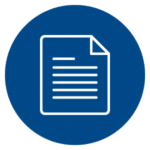Mini-Lesson Modeling
Powerful learning occurs when teachers see best-practice explicit instruction firsthand. It’s one thing to hear about effective reading and writing lessons. It’s a different matter altogether to see a live mini-lesson presented with your own students—but led by a Smekens literacy consultant.

Seeing is believing
What is mini-lesson modeling? When educators are provided with ample training on the value and characteristics of explicit teaching delivered using the gradual release of responsibility, they want to see this type of direct instruction for themselves.
It’s after teachers view the short, step-by-step instruction delivered by a Smekens consultant that they crystallize their own vision for how to lead effective reading and writing mini-lessons.
What is a mini-lesson anyway?
A mini-lesson is a short, narrowly focused lesson that is typically delivered in front of the entire class. While the mini-lesson plays a key role in Tier I instruction for reading and writing, the best-practice principles can also be applied to any content area.
Announce the specific mini-lesson skill being taught.
Teach the skill explicitly through modeling, examples, and Think Alouds.
The whole class works together to apply the skill with the teacher close by to provide support.
Wrap up and identify what you want students to do with the skill on their own.
Benefits of modeling direct, explicit instruction
Whenever you learn something new, it’s helpful to watch someone else do it first. And even if you’re a seasoned pro, watching other experts in action helps to sharpen your own skills.

Allows teachers to view explicit instruction in action.
Reveals the gradual release of responsibility – I do, we do, you do.
Provides teachers with lesson ideas they can replicate later.
Demonstrates an effective Think Aloud during a four-step mini-lesson.
Offers post-observation “debriefing” to discuss, ask questions, and plan next steps.
Highlights the value of best practice explicit instruction that is fun and engaging.
Re-energizes teachers by providing in-the-trenches support.
Impacts the entire staff by having rotations of teachers observe lessons.
Highlights the potential of each student by allowing teachers to observe learning.
Demonstrates a commitment to ongoing professional learning.
Offers job-embedded training and support in the context of your own school.
How to plan on-site mini-lesson modeling
Great things can happen when a plan comes together. Here’s how to prepare for successful on-site modeling of direct, explicit instruction:
Call Smekens to schedule mini-lesson modeling.
After your day of mini-lesson modeling is on the books, your Smekens consultant will reach out to start planning the details.
What other educators say
“I love it that we can immediately apply what we are learning! We learn it, see it in action, and then see it in one of our own classrooms! There is no doubt of understanding.”
Melissa Jordan
Teacher,
Starr Elementary, Richmond, IN
“I loved seeing this taught to my students at our own school! It helped me brainstorm about how I’ll teach this to my students, and I especially love the props & visuals used to solidify ideas for my students (light bulb, putty).”
Erin Nihill
Teacher,
Ardmore Elementary School, Allison, IL
Michelle Ostendorf
Teacher,
Sixth District Elementary School, Covington, KY
How much does mini-lesson modeling cost?

Most Smekens consultants have a base rate of $2,700 per day. For schools located more than 4 hours from Indianapolis, IN, additional fees may be required to account for travel time.


Meet our school consulting team
Kristina Smekens
Courtney Gordon
Didi Harris
Shona Lansdell
Kristi McCullough
Rachel Remenschneider
Holly Sluyter
Meet our school consulting team
Kristina Smekens
Courtney Gordon
Didi Harris
Shona Lansdell
Kristi McCullough
Rachel Remenschneider
Holly Sluyter
Meet our school consulting team
Kristina Smekens
Courtney Gordon
Didi Harris
Shona Lansdell
Kristi McCullough
Rachel Remenschneider
Holly Sluyter
Top questions about mini-lesson modeling
How can we help the consultant prepare for a day of modeling?
In order to enjoy a powerful day of mini-lesson modeling, strong communication and planning before the consultant arrives is essential. To allow for ample planning ahead of her visit, the consultant will reach out at least two weeks in advance to discuss lesson topics, schedules, audio-visual setup, etc. A prompt response to the consultant’s inquiry will equip her with the details she needs to prepare a customized series of lessons.
How do we structure the schedule for the day?
An effective schedule would involve as many teachers as possible in a rotation that allows for 6-8 lessons during the day. Each rotation of teachers could last as little as 40 minutes and should include time for a pre-lesson meeting with the consultant, the mini-lesson, and a post-lesson debriefing. A carefully-crafted coverage schedule can allow for multiple groups of teachers to observe lessons throughout the day.
What training should be in place ahead of mini-lesson modeling?
Mini-lesson modeling days will be most effective if teachers have already learned about explicit instruction (the 4-step mini-lesson model) and have experimented with this type of direct teaching in their own classrooms.
Let’s Connect
Complete the form below or call (888) 376-0448.
We are eager to help you achieve your PD goals!







